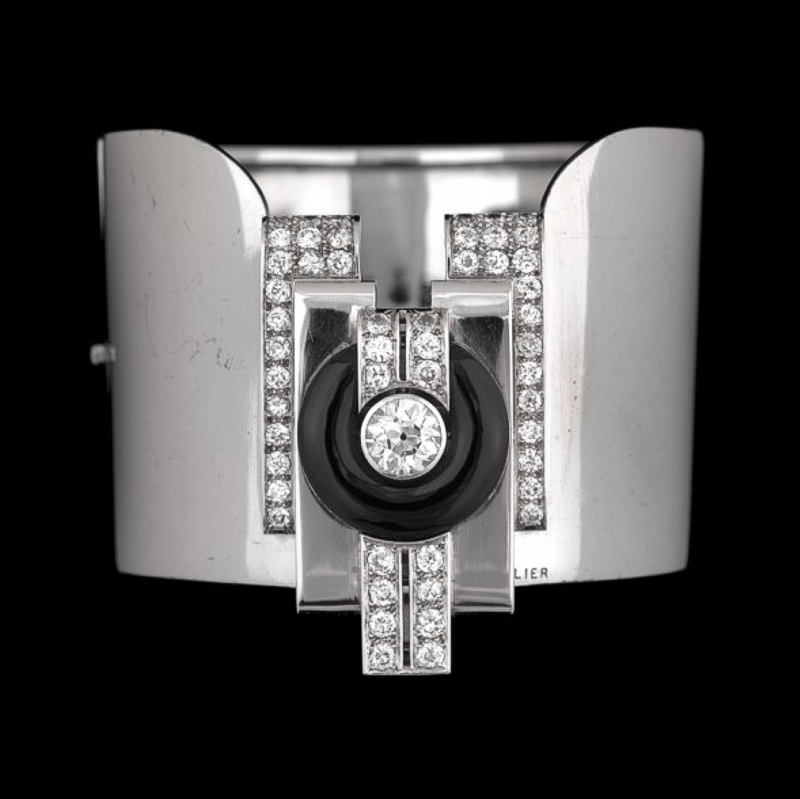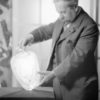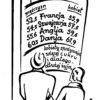TEMPLIER
When Raymond Templier took over in a family jeweller’s workshop in 1922, his head was filled with concepts and he certainly did not plan to continue the traditional style developed by his father and grandfather. He was fascinated by new trends in art and enjoyed fresh solutions such as cubism and futurism. He actively took part in contemporary artistic life, participating in the most prestigious events, including Paris Expositions in 1925 and 1937. In 1929 he became a member of UAM (Union Des Artistes Modernes), the organization connecting the greatest visionaries as regards Art Deco, including his colleagues – Jean Fouquet, Jean Puiforcata and Gérard Sandoz.

One can find the answer to this question in bracelets designed in the second half of the 20s. Wide cuffs made of smooth silver were covered with geometric patterns made of black enamel. Templier was inspired by the experiences of Italian futurists (for example, the works of Umbert Boccioni or Giacomo Balla), who presented the movement of the propeller or the drive of the car using chevrons and diamonds. Overlapping surfaces, sharp edges and penetrating planes – all of which resulted in rhythm, pulsation and brought back to life the power of the engine or spin of the turbine.
Such sporty elegance suited woman living in the hustle and bustle of the big city perfectly, but Templier offered more sophisticated evening compositions as well. What is worth attention is the bracelet he created in the late 20s as 2 in 1 jewellery which was very popular at the time, he placed a sophisticated brooch made of geometric planes and black onyx eyelet on the wide cuff. The brooch is decorated with numerous diamonds which Templier always used in a very thoughtful way. He developed an innovative method which allowed him to make the stones glow even more – he curved the metal surfaces so that similarly to mirrors they would reflect the diamonds and crystals.
Text: Kamila Utrata &
photos: VIRGINIA MUSEUM OF FINE ARTS
It was then when his imagination was completely taken over by geometric shapes and structural components such as cogwheels, crankcases, connecting rods and gearshift. On one occasion Templier confessed that he drew inspiration from urban landscapes – buildings, cars, machinery and equipment. As he was fascinated by new technologies, industry and transport, he soon faced the most important question concerning his work: How to express the rush of urban life in jewellery?

One can observe designer craftsmanship in such nuances. Like an engineer he selected structures, raw materials, colours to create a beautiful and functional composition. In 1954 Mobilier et Decoration gave Templier the title of a jewellery designer and it was definitely an accurate description.




